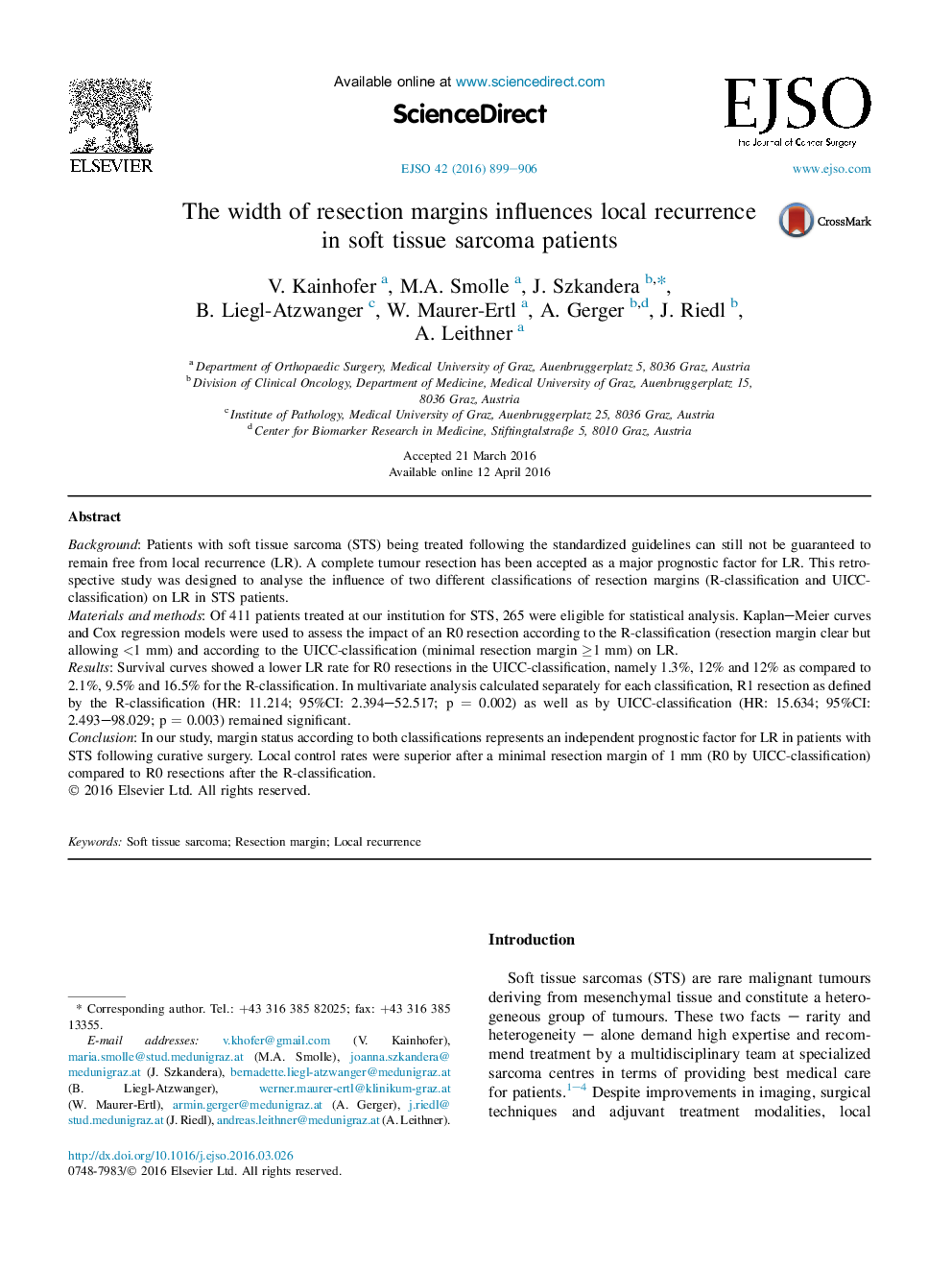| Article ID | Journal | Published Year | Pages | File Type |
|---|---|---|---|---|
| 3984552 | European Journal of Surgical Oncology (EJSO) | 2016 | 8 Pages |
BackgroundPatients with soft tissue sarcoma (STS) being treated following the standardized guidelines can still not be guaranteed to remain free from local recurrence (LR). A complete tumour resection has been accepted as a major prognostic factor for LR. This retrospective study was designed to analyse the influence of two different classifications of resection margins (R-classification and UICC-classification) on LR in STS patients.Materials and methodsOf 411 patients treated at our institution for STS, 265 were eligible for statistical analysis. Kaplan–Meier curves and Cox regression models were used to assess the impact of an R0 resection according to the R-classification (resection margin clear but allowing <1 mm) and according to the UICC-classification (minimal resection margin ≥1 mm) on LR.ResultsSurvival curves showed a lower LR rate for R0 resections in the UICC-classification, namely 1.3%, 12% and 12% as compared to 2.1%, 9.5% and 16.5% for the R-classification. In multivariate analysis calculated separately for each classification, R1 resection as defined by the R-classification (HR: 11.214; 95%CI: 2.394–52.517; p = 0.002) as well as by UICC-classification (HR: 15.634; 95%CI: 2.493–98.029; p = 0.003) remained significant.ConclusionIn our study, margin status according to both classifications represents an independent prognostic factor for LR in patients with STS following curative surgery. Local control rates were superior after a minimal resection margin of 1 mm (R0 by UICC-classification) compared to R0 resections after the R-classification.
